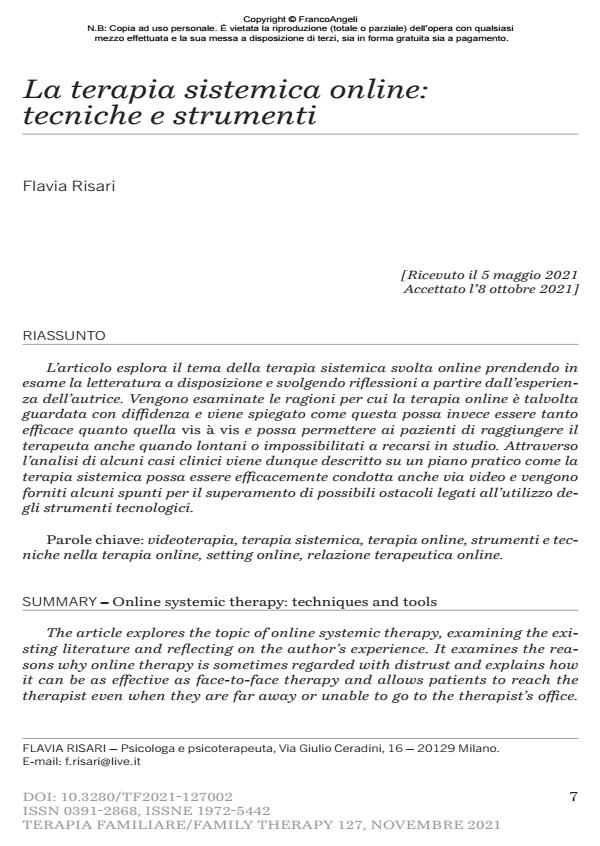Online systemic therapy: techniques and tools
Journal title TERAPIA FAMILIARE
Author/s Flavia Risari
Publishing Year 2022 Issue 2021/127
Language Italian Pages 24 P. 7-30 File size 666 KB
DOI 10.3280/TF2021-127002
DOI is like a bar code for intellectual property: to have more infomation
click here
Below, you can see the article first page
If you want to buy this article in PDF format, you can do it, following the instructions to buy download credits

FrancoAngeli is member of Publishers International Linking Association, Inc (PILA), a not-for-profit association which run the CrossRef service enabling links to and from online scholarly content.
The article explores the topic of online systemic therapy, examining the existing literature and reflecting on the author’s experience. It examines the reasons why online therapy is sometimes regarded with distrust and explains how it can be as effective as face-to-face therapy and allows patients to reach the therapist even when they are far away or unable to go to the therapist’s office. Through the analysis of some clinical cases, it is described on a practical level how systemic therapy can be effectively conducted via video and some hints are provided for overcoming possible obstacles related to the use of technological tools.
Keywords: Video therapy, systemic therapy, online therapy, tools and techniques in online therapy, online setting, online therapeutic relationship.
Flavia Risari, La terapia sistemica online: tecniche e strumenti in "TERAPIA FAMILIARE" 127/2021, pp 7-30, DOI: 10.3280/TF2021-127002